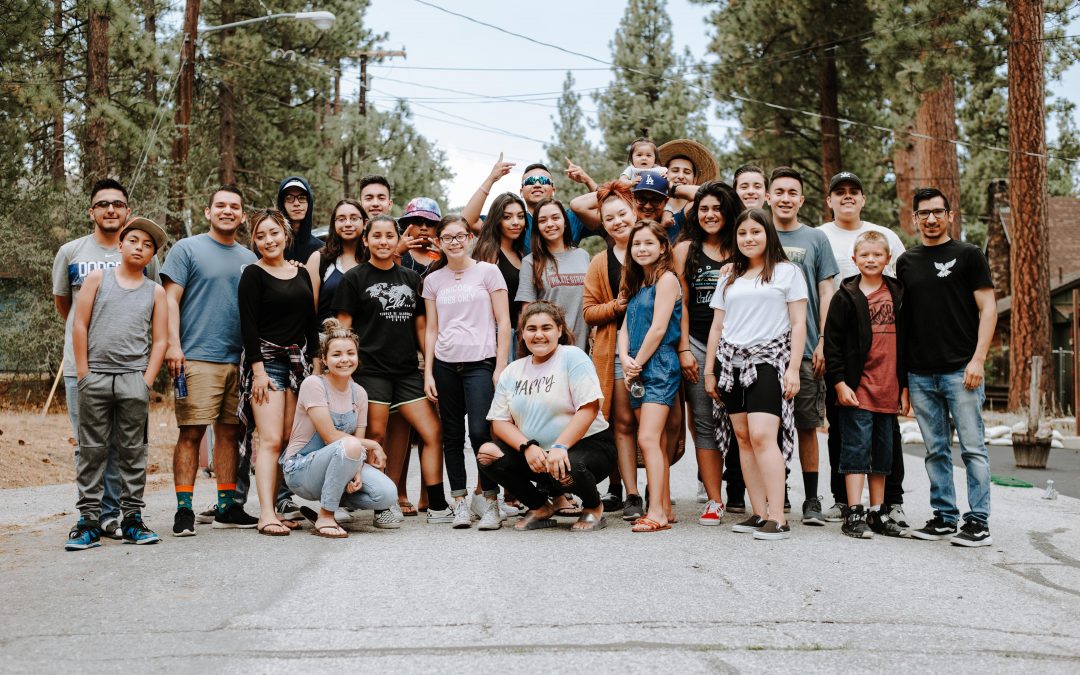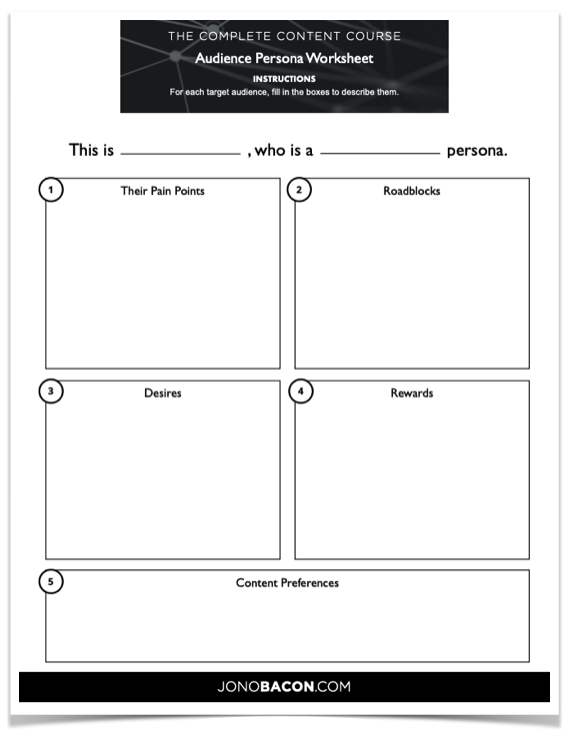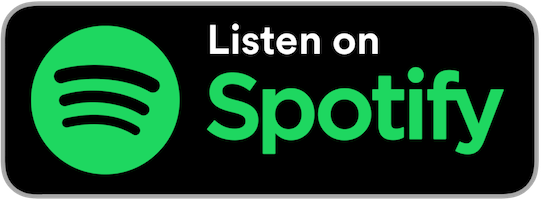
How to Have an Executive Session With Yourself
Are you feeling confused, stressed, or have some issues about your business/career that you need to resolve? If so, you’re in the right place. This video covers how to have an executive session with yourself so you can keep growing as a person and business.
Having an executive session with yourself is much like having a session with a coach or mentor, but you’re having the conversation with you.
Namely, that means you’re having a conversation between the two parts of you! Those parts are the emotional, possibly self-doubting part, and the “head coach,” executive part.
This executive session can help you resolve more about yourself, your insecurities, and anything that you need to work through to get closer to whatever you think success is. It’s a little change with a BIG impact!
Here’s how to have an executive session with yourself…
1: Get away to a peaceful place where you can speak to yourself (out loud!!)
2: Put your mind into “incognito mode” to form a “head coach” part of your mind that grounds you when you’re having self-doubt, confusion, and more.
3: Start the conversations with your “head coach.” (Be honest!)
4: Discuss with your head coach. Ask tough questions!
5: Find practical solutions to your issues!
Using these 5 steps you’ll be able to find new clarity and new perspectives to the problems you face in your endeavors.

How to Design an Effective Audience for Your Content
Pop quiz! Who is your target audience? It should be an easy question to answer, but how specific can you be? When you’re creating content, do you have a well-defined avatar in mind?
An honest answer for a lot of content creators would be, “Eh…sort of.” Indeed, sometimes we’re just tossing content out there into the world, fingers crossed, and hoping that someone, anyone will read it.
But you wouldn’t walk into a public space filled with random people and just start shouting about—oh, let’s say “email marketing.” Why not? Because in a crowd of random people, chances are most of them won’t have any interest in email marketing, and the few who do probably won’t pay attention because of all the noise around them. You would almost certainly be wasting your breath. Heck, if it’s a global audience, you might not even be speaking their language.
Yet this is what many content creators are essentially doing online—throwing content into the wind and hoping someone will notice. If you’re trying to talk to as many people as possible, you actually make it harder for the right people to hear what you have to say. This is one of the biggest reasons why some great content never gains traction.
In reality, if you wanted to talk to an audience about email marketing, you would select an appropriate venue filled with people that you know had a vested interest in the subject, and you would address it in a way that speaks to their specific interests and needs. The same goes for all of your online content.
Defining your target audience should be foundational to content creation. Know exactly who you’re speaking to before you start speaking! That way you’re sure that you are speaking their language, addressing their actual pain points, and providing solutions they want and need.
Starting from the Other End
While many content creators focus on trying to create content that generates interest with their audience, I recommend starting from the other end of the equation. First, get to know your audience, understand their pain, roadblocks, and desires, and then focus on trying to relieve that pain, get them over those roadblocks, and meet those desires.
Consider the following pairs of headlines. Which one speaks more effectively to the specific pains of a relevant audience:
“5 Ways to Build a Better Business” or “5 Business Expenses You Can Cut Right Now”
“How to Create a Great Blog Article” or “Overcome Writer’s Block and Start Creating Awesome Blog Content Today”
“7 Ways to Win Over Investors” or “7 Ways to Make Sure Your Investor Pitch Isn’t Boring”
What’s the difference between the two headlines? The second headline in each pair comes from a place of 1) understanding a specific audience, 2) knowing their needs, 3) speaking to those needs. Of course, to do that, you first have to define your target audience, and that means creating a persona.
People in marketing sometimes waffle when it becomes to creating personas because it seems like too much nitpicky work. Look, we don’t need to know exactly what your target audience puts in their Weetabix for breakfast. We just need to clarify enough information to ensure that we are creating content that is optimized for their needs and interests.
To help you with this, I’ve created an easy-to-use audience persona template. Download it and follow along. I’ll walk you through the template box by box, using my own examples, to make this as painless as possible.
To select a persona, you first need to think of your audience. This is the broad category of people that you need to reach and build relationships with. Do you need to reach small business owners, marketers for fintech companies, C-suite leaders of large corporations, B2B salespeople, independent contractors who work from home (and so on)?
Step One: Identify Your Persona
With your audience in mind, narrow it down to single individuals. These are your personas. They aren’t real people but fictional concepts of who members of your target audience might be.
Maybe your persona is:
- Dave, the 35-year-old founder of a small investment company,
- or Rachel, a 24-year-old B2C marketer,
- or Abdul, the 57-year-old president of a fintech company.
Fill out the top line of the Audience Persona Worksheet: “This is Dave, a small-company founder, who is a buyer persona.”
Once you’ve settled on a persona, you can begin to identify their pain points, roadblocks, desires, rewards, and content preferences. Use your creativity to come up with this information. Remember, it’s a fictional person, but it needs to represent your target audience well.
Step Two: What Are Their Pain Points?
The content that resonates best is the content that makes people’s problems go away. If you figure out your target audience’s pain points, you’re going to open the door to a whole lot of excellent content ideas, because you’ll know the specific issues you need to address to make an impact.
On the worksheet, identify the specific pain points for your persona. What are the things they struggle with? Are there aspects of their job that they hate? What are the things that keep them up at night? Write these down as bullet points in the appropriate box.
Examples of pain points might include:
- Dave, the small-company founder, struggles with recruiting new talent.
- Rachel, the B2C marketer, feels increasingly frustrated trying to use Google AdWords effectively.
- Abdul, president of a fintech company, is stressed out trying to set competitive prices for his products and services.
Step Three: What Are Their Roadblocks?
Roadblocks are the things standing in your persona’s way, hindrances that make it more difficult to achieve their goals.
- For Dave, the small-company founder, a big roadblock to hiring great talent are budget constraints.
- In the case of Rachel, the B2C marketer, constantly tweaking keywords has become a time-consuming roadblock to creating brand recognition.
- For Abdul, the fintech president, customer research seems complex and difficult, but the feedback is absolutely necessary.
Any content that might help your persona overcome these roadblocks will be deeply appreciated. What is standing in their way? Identify specific things that slow them down and hinder them from achieving their goals. Write them down as bullet points in the appropriate box.
Step Four: What Are Their Desires?
When your persona wakes up in the morning, what are they excited about? What is it that really moves and motivates them? Examples of persona desires might include:
- Dave, the small-company founder, absolutely loves finding a new potential hire who is a perfect fit for the company culture.
- For Rachel, the B2C marketer, brand loyalty is what gets her up and moving in the morning. It’s her dream to make customers fall in love with the brand.
- Abdul, the fintech president, gets energized when he thinks about entering new markets.
Any content that can speak to these desires, that can really move your persona, is going to get their attention right away.
Step Five: What Are Their Preferred Rewards?
What are the things your persona likes to be rewarded with? Do they like t-shirts, gadgets, public recognition from their community, or do they prefer things like building new partnerships, winning over new audiences, and entering new markets to build brand recognition?
Some of the content you create can act like a carrot on a stick, enticing readers into a deeper relationship with you by offering rewards that matter to them.
- Dave, the small-company founder, is chiefly interested in networks and communities that will enable him to meet skilled people who might be potential hires.
- For Rachel, the B2C marketer, appreciates any free seminar, webinar, or training session that will improve her marketing skills.
- Abdul, the fintech president, is a gadget guru, so any new tech, app, or device is going to pique his interest.
Identify the desired rewards of your persona and write them in this box.
Step Six: What Are Their Content Preferences?
Finally, you need to determine how your persona prefers to consume content. Do they like to read books and articles? Do they like listening to podcasts, YouTube videos, or webinars? Maybe they prefer to attend seminars and training sessions. Are there specific websites or social media platforms they like better?
Write down the ways your persona likes to consume information. Be thorough, even if you run out of space in the box and have to continue on the back of the page.
- Dave, the small-company founder, is active on various social media channels, especially LinkedIn, Facebook, and Instagram. This is where he connects with people and consumes content.
- For Rachel, the B2C marketer, prefers podcasts, videos, and webinars, which she often consumes while commuting on public transportation.
- Abdul, the fintech president, spends his free time reading short content articles, especially tech-related articles from experts in the field.
Figuring out your persona’s content preferences will help you focus on using the right channels to reach them with your content. For example, if you’re trying to reach Rachel, maybe you need to spend less time on a blog and more time producing short, meaningful YouTube videos.
Get Feedback on Your Personas
Once you’ve filled out all of the boxes for your persona, get a variety of feedback and criticism from team members, friends, and family. Adjust your persona as needed until you’ve got it just right.
With clarity on your personas, you can now adjust your content strategy to serve them. Everything you do needs to have a clear dotted line that connects to your target personas. Otherwise, you run the risk of wasting your time and resources.
All of this will create a focused, personalized content experience that they will love, and that’s the key to long-term meaningful relationships.
image credit: https://blog.hubspot.com/marketing/build-audience-online

How to Nail Your Headline, Title, and Subject Line
You spend hours crafting a beautiful blog post full of fancy graphics and eye-opening statistics, with a couple of amusing anecdotes thrown in for good measure, but almost nobody in your target audience reads it. They don’t even make it past the headline.
It’s a frustrating experience, but it’s an all-too-common problem. According to studies, 80 percent of readers never get past the headline of most articles. Those are not good odds.
Then again, you probably do the same thing yourself. Think about the last time you searched for something on Google. When looking at the search results, you didn’t have much to go on—a title, maybe a sentence and a half of content, and that’s it. Chances are, the title alone played the biggest role in determining whether or not you clicked on the link or kept scrolling.

There’s a lot riding on a headline. It has to encapsulate the value of the article and somehow capture the attention of potential readers within a couple of seconds (or less). The same goes for YouTube titles and email subject lines. You have a few words to convince people that your article, email, or video is worth their time, and if you fail to do so, you’ll kill your content before the first word is even read or the first second of video is watched.
The greatest content in the universe simply can’t overcome a dull, confusing, or unappealing headline.
Then again, even if you convince people to read your article or watch your video, the headline will continue to have an effect on the way they digest your content. As it turns out, first impressions really do matter. A clickbait-ish or misleading headline might compel people to click on the link or open the email, but it can also impair their ability to get value out of your content. In a sense, your headline makes a promise to readers that the article must keep.
It’s tricky. Anyone who creates regular content online knows the struggle of trying to encapsulate the value of that content in a catchy headline or title. How do you turn 1,500 amazing words into an equally amazing ten-word headline? It’s a monumental task that has been the ruin of many a marketer.
Fortunately, there are a few core fundamentals you can apply when creating headlines, email subject lines, or video titles that will help you to gain a reader’s (or viewer’s) interest and help them get the most out of your content.
I recommend the four following “golden rules” to bear in mind:
#1. Specificity
Readers and viewers want to know exactly what you’re going to tell them. A vague title doesn’t interest anybody, so share some specific, key piece of information in the title, whether that’s a statistic or a main point of the article. In doing so, you are giving them a peek behind the curtain at the awesome content that is to follow.
Vague: “Write a Book!”
Specific: “How to Get Started Writing Your First Book”
#2. Honesty
As I said, your headline is making a promise to the readers about the content that is to follow. Clickbait might get readers to look at your article, but you will discourage them from future articles if you don’t fulfill the promise of the headline. A little embellishment is just fine, but an outright lie will poison the well.
Dishonest: “Become a Millionaire Overnight with One Easy Investment”
Dishonest: “7 Tips for Getting 10x (even 20x) Return on Your Investment”
#3. Creativity (but Not Too Much Creativity)
If possible, you want your headline to be entertaining, intriguing, or amusing, but don’t overdo it. If you try too hard, it will seem forced, which could turn people away.
Too Much: “10 Weird Mind Worms that Are Gnawing at the Foundation of Your Future”
Creative: “10 Misconceptions that Are Ruining Your Life”
#4. Active not Passive
Try to avoid using passive voice in your headlines. A passive headline suggests a passive article. Instead, select action verbs that best summarize the call-to-action of the article or video.
Passive: “It’s Smart to Do These Ten Things”
Active: “10 Ways to Sharpen Your Mind”
While these fundamentals apply to almost any online content, you have to approach different kinds of content in different ways. Let’s look at some practical guidelines for three specific kinds of content: blog post headlines, YouTube titles, and email subject lines.
Amazing Blog Post Headlines
#1. Make It Catchy
Blog posts benefit from catchy titles that offer useful information to potential readers. In a few short words, demonstrate your expertise on the subject at hand, using relevant keywords to make your topic understandable to both readers and search engines.
Example: “Surprising Insights About World-Changing Marketing Campaigns”
#2. Consider Using a Number
Starting your headline with a number creates an explicit promise about the amount of useful content you’re going to provide in your post. It also offers a degree of structure and organization to the content, so readers know they won’t be wading through chaos.
Example: “7 Tools Every Sales Team Needs Now”
#3. Appeal to Emotions
If you can get readers emotionally invested in your headline, they will be far more likely to read the article. Can you inspire, move, or delight readers?
Example: “How to Stand up to Your Mean Boss”
#4. Write for Your Target Audience
Think about the topics, keywords, and ideas that will appeal to your target audience. What are they looking for? What do they care about? Include specific words that you know will pique their interest.
Example: “The Ultimate Marketer’s Guide to Mind-Blowing Social Media Content”
Inspiring YouTube Titles
#1. Mind the Length
When viewers come across your video in YouTube search results or a recommended video list, they’re going to see a tiny thumbnail and about ten words of your title. If your title is longer than that, it will simply end in ellipses, and viewers won’t see the rest unless they click on the link. Make sure the words that show are interesting or meaningful. Otherwise, potential viewers may never see the rest of the title.
Example: “Three Easy Tips for Helping Your Underperforming Sales Team to Win…”
#2. Use Keywords
YouTube is the second most popular search engine in the world after Google, so treat it that way when it comes to your title. Include a word or two that will powerfully appeal to potential viewers who are searching for topics related to your content. Make sure those keywords are located toward the front of the title, so they don’t get swallowed by the ellipses.
Example: “Awesome Design Specifications for Your Next Engineering Project”
#3. Coordinate with Your Thumbnail
Your YouTube title will appear beneath or beside a video thumbnail, so make sure they work well together. If the thumbnail communicates something different from the title, you’re going to confuse people, and probably encourage them to keep scrolling. A picture of a carpenter repairing a wardrobe door next to the title, “The 5 Best Vacation Spots in Argentina,” just doesn’t make sense.
Exciting Email Subject Lines
#1. Include One
This may seem obvious, but sometimes marketers skip the email subject line, either intentionally or accidentally. However, the subject line is often the biggest factor in determining whether or not the recipient will open the email. The subject line sets the tone and gives the recipient a reason to dive into the content, so don’t forget it!
#2. Get to the Point
A typical email inbox limits the title to about 60 characters, but on a cell phone, it’s even shorter: perhaps only 20 to 30 characters. Increasingly, users are checking their email on their phones, so you’d better get right to the point! You may have fewer than ten words to entice them. Put your most important words up front and be laser focused.
Example: “Win your dream job today! Here’s how.”
#3. Make It Timely
Even if the recipient doesn’t delete your email right away, it’s easy to simply allow it to creep down their inbox and disappear into the second page. Sometimes, they think, “This might be interesting, but I’ll open it later.” However, later turns into never, and your email is gone. To avoid this, try to include a deadline in the subject or ask for a specific response.
Example: “Your last chance to revolutionize your company culture…”
Keep Them Coming Back for More
Now, the best headline in the world doesn’t guarantee the success of your online content. The article, email, or video must also provide a meaningful and compelling experience. However, if you can’t get people to check out your content, then all of your hard work is for nothing.
Think carefully about your headline or subject line. Consider testing it before hitting the “publish” or “send” button. Try some variations, read them out loud, and get feedback from trusted voices. Remember, an effective headline is authentic, not tricking people into clicking on a link, but promising them information, advice, or tips that they can implement. Make the promise, fulfill it, and your audience will keep coming back for more.
(This article was mainly talking about headlines, but if you have the rest of a landing page to write, check out this article about how to write good webinar landing pages!)
Image credit: https://mediashift.org/2017/04/13-examples-headline-magic/

Michael Zipursky on Building an Incredible Consulting Business
A while back when I was promoting People Powered, I was invited to go on a podcast all about consulting. As a consultant, it is rare that I get an opportunity to be interviewed about the business itself as opposed to the focus and subject of my work. Little did I know I would be interviewed by a consulting mastermind.
Michael Zipursky runs Consulting Success and provides a range of services that help consultants run successful, profitable businesses. Outside of our interview, we became friends and I have learned a huge amount from Michael about what he has learned from working with hundreds of consultants. He has a great resource on How To Start a Consulting Business that I recommend.
As such, I was thrilled that he was open to joining me on Conversations With Bacon.
We get into a lot of really interesting discussion and topics, which include:
- How much experience is needed to be a consultant
- How to find clients and business more effectively
- The role of media and publicity in growing a consulting business
- How to approach adversity and challenges, especially when a solo consultant
- How to balance being an expert and being a good listener
- How to structure what your value proposition is and what mistakes people commonly make
- …and much more…
Be sure to give this discussion a listen!
Communities are changing the way we do business. Discover a concrete framework for building powerful, productive communities and integrating them into your business. My new book, ‘People Powered: How communities can supercharge your business, brand, and teams’, is out now, available in Audible, Hardcover, and Kindle formats.
As usual, thank you to the fantastic Marius Quabeck and NerdZoom Media for mixing the show!

Lane Shackleton on Design, Product, and Coda
Recently I was introduced to Coda – a platform that aims to re-invent the document – bridging live data, views, and more to enable people to collaborate more effectively together.
What really struck me, aside from the technology, is how well designed and delivered Coda is. It presents a powerful set of features that requires careful design to be both discoverable and useful.
You can thank Lane Shackleton and his team for much of this work. As the Head Of Product and Design at Coda, I was eager to learn how the sausage was made, and his general approach to building products people love.
As such, I was thrilled that he was open to joining me on Conversations With Bacon.
We get into a lot of really interesting discussion and topics, which include:
- How to balance complex features with simple design
- The role of different visual techniques to interact with information and data
- How practical examples get people to play with and understand new tools
- How to balance existing norms of documents with new ways of collaborating
- How to effectively integrate with other services
- How platforms approach collaboration around both templates as well as documents
- …and much more…
If you are interested in elegant product design and development, whether you use Coda or not, I think you will find a lot of value in this episode. Give it a listen!
Communities are changing the way we do business. Discover a concrete framework for building powerful, productive communities and integrating them into your business. My new book, ‘People Powered: How communities can supercharge your business, brand, and teams’, is out now, available in Audible, Hardcover, and Kindle formats.
As usual, thank you to the fantastic Marius Quabeck and NerdZoom Media for mixing the show!
Listen
Podcast: Play in new window | Download

Allan Dib on Delivering Thoughtful Marketing
I first discovered Allan Dib when I read his book, ‘The One Page Marketing Plan‘. It was refreshing: there weren’t the glitzy, sensationalist, unrealistic techniques that some of the marketing gurus use – it was simple, effective, practical advice.
As such, I knew I wanted to have Allan come on Conversations With Bacon, and I was thrilled when he agreed to it.
Unsurprisingly, we get into a frank, realistic, focused discussion and cut through much of the nonsense ravaging the marketing world.
This includes:
- Allan’s IT background and how he got into marketing.
- His struggles with learning marketing, and how he conquered them.
- The role of data in marketing and how you can learn from it.
- His views on sensationalist marketing gurus and their techniques.
- The risks of short term vs. long term gains.
- The cultural impact of Allan’s Australian heritage on his approach.
- The role of copywriting in great marketing.
- …and much more…
If you are interested in marketing, definitely check out this show!
Communities are changing the way we do business. Discover a concrete framework for building powerful, productive communities and integrating them into your business. My new book, ‘People Powered: How communities can supercharge your business, brand, and teams’, is out now, available in Audible, Hardcover, and Kindle formats.
As usual, thank you to the fantastic Marius Quabeck and NerdZoom Media for mixing the show!
Listen
Podcast: Play in new window | Download

Mark Shuttleworth on Life, Business, and Ubuntu
Mark Shuttleworth has weaved a fascinating story in his life so far. He founded and sold his company, Thawte, was the first South African in space, created one of the most popular open source projects, Ubuntu, and has built a successful company, Canonical. There is little doubt that his story still has many chapters ahead.
As many of you will know, I used to work for Mark at Canonical, and I learned enormously from him and my colleagues there. As such, I was thrilled to bring him on Conversations With Bacon where we have a rather intimate discussion about how his story has unfolded, the choices he has made, and his experiences so far.
We dig into:
- His experience selling his company and choosing his journey.
- Why he started Ubuntu and how it came together.
- His background and how he got involved in business.
- The role of credibility in the open source world.
- How the business of open source has shifted and adjusted.
- How he has dealt with the pressure of being a notable figure in open source.
- His experience as a South African working in an industry often dominated by Silicon Valley.
- His evaluation of previous decisions, failures, and opportunities.
- The role of an emotional connection with our work and how to make choices.
- …and much more…
This was a fascinating discussion brimming with insight. Well worth a listen!
Communities are changing the way we do business. Discover a concrete framework for building powerful, productive communities and integrating them into your business. My new book, ‘People Powered: How communities can supercharge your business, brand, and teams’, is out now, available in Audible, Hardcover, and Kindle formats.
Thank you to always rocking Marius Quabeck and NerdZoom Media for mixing the show!
Listen
Podcast: Play in new window | Download

Ian Tien on Mattermost, Messaging, and Building a Business
There is little doubt that realtime discussion, collaboration, and chat has had a significant impact on businesses and communities. While Slack has risen as a dominant leader, open source powered Mattermost has gone on to grow more and more significantly as a powerful option, and one that arguably puts far more control in the hands of their users.
This is why I was thrilled to bring Ian Tien, CEO of Mattermost on Conversations With Bacon. We don’t just dig into what is happening at Camp Mattermost, but also the broader state of messaging, collaboration, open source, and more.
We dig into:
- What Mattermost is and why it is different
- There is a lot of talk about Microsoft Team’s growth – is it real?
- How open source has played a role in Mattermost and beyond
- What Ian learned in his years at Microsoft and how that impacts creating and delivering value
- How Microsoft went through a cultural change in their relationship with open source
- How Mattermost has approached managing and delivering their product roadmap
- The role of “customer obsession”
- What has been the hardest elements of building a remote company and culture
- The importance of finding what gives you “energy” in the work you do
- …and much more…
This was a really interesting and deep conversation, and we covered a lot of ground. Be sure to check it out!
Communities are changing the way we do business. Discover a concrete framework for building powerful, productive communities and integrating them into your business. My new book, ‘People Powered: How communities can supercharge your business, brand, and teams’, is out now, available in Audible, Hardcover, and Kindle formats.
Thank you to always rocking Marius Quabeck and NerdZoom Media for mixing the show!
Listen
Podcast: Play in new window | Download

5 Reasons Why People Are Not Joining Your Community (and How To Fix Them)
There’s a saying from the famous movie “Field of Dreams”: “if you build it, they will come.”
While inspiring, that’s just not always true, in fact, many times things go the opposite way when it comes to community building. Sometimes instead of bums on seats we get crickets. Let’s explore the common reasons why people don’t show up and how we fix them.
#1. Your community is not offering enough value to your audience
Humans only try new things if they get something out of it. And that’s what your community is: it is NEW to them. As such, we need to give them undeniable value if we want them to show up.
To figure out what your incentives for members joining should be, ask yourself a simple question.
What does your audience hate about life? What is the pain they’re experiencing?
When you focus on relieving their pain, they will join you. That is the key.
For example, a common pain point of camera owners is spending a lot of money on camera equipment without knowing if they’ll like it. So, what value can you add to relieve that pain?
In this case, you could give them a list or summary of top rated equipment, so they no longer worry about this. Maybe you could also provide them with a forum they can join to ask their questions?
As another example, if you are building a community of musicians who are struggling to understand a piece of audio equipment, maybe you could provide them with a free e-book that walks through the gear when they join your community?
The key is to understand what they are struggling with, and give them value that relieves it.
#2. People haven’t heard of your community
If you build it but don’t tell anyone about it, they definitely won’t come.
When launching a community, a sprinkling of social media posts, emails, and the odd video here and there simply isn’t enough to get people to join. Instead, you need to have a constant flow of valuable content and opportunities that lead people to your community.
To do this, I suggest making a weekly list of 3 – 5 interesting discussions, events, content, and other things going on in your community each week. Then, share these different things across social media, blog posts, videos, and beyond.
Another way you can raise awareness is to simply to feature your community in your other tools and resources. For example, list your community on your website, social media descriptions, GitHub repositories, events, presentation decks, YouTube videos, and more.
Again, focus on finding every possible opportunity to promote your community everywhere and put it center stage, where it deserves to be.
#3. Your onboarding sucks
When you go to Disneyworld, every element of your experience is carefully carved out. From how you park your car, to how you buy tickets, to how you walk around the park, hop on rides, and grab cheeseburgers, Disney have designed every element of the experience to be as high quality as possible.
The same happens in video games: the first few levels are designed to help you familiarize yourself with the controls and achieve some simple tasks.
The key point here is delivering a simple, elegant, high quality experience. We need to do that in our communities, and the first step in doing so is nailing the onboarding experience.
Far too many people spend bags of time on the outreach and promotion of their community, then underwhelm once people actually join. Or worse, people just get stuck in trying to figure out how to get started.
I suggest you get your onboarding process in shape before you worry about the promotion.
There are six steps to do this, which need happen in order:
- Give them a reason to participate.
- Make it easy to get up and running with the tools required to participate.
- Help them develop the skills they need to be successful in the community.
- Make sure they can easily find a task or project to work on.
- Provide a way for them to ask questions and get answers from a REAL HUMAN.
- Once they have been through this onboarding process, thank them for their first contribution – it will really help them to feel rewarded and settle into the community.
Put these basic steps into action before any significant promotion, and you’ll get more members joining.
#4. Your platform sucks
Lots of companies, from Discourse to Vanilla and others, are offering community platforms that you can use to host your community. These platforms often provide a rich set of features and capabilities.
You wouldn’t be alone if you chose your platform based on the latest and greatest features, however, there IS such a thing as TOO much tech, as it can be confusing for your users.
Focus first and foremost on delivering a simple community experience where you can help great content and discussions bubble to the surface. As you are building growth, switch off the unnecessary bells and whistles such as leaderboards, top lists, and other fluff. Focus most on why your members are there – the content and the discussions.
For example, one of the first communities I started only used an email discussion list for communication. We experimented with other platforms but ultimately kept going back to the basics. It just worked!
Always ask yourself when choosing a platform and the features within it, “is this feature really necessary?” If it is not, give it the boot.
Also, don’t spread your community too thin across too MANY platforms! Just pick one spot to send all your members. This will keep things simple and most impactful.
#5. Your engagement just isn’t good enough.
Remember earlier when we talked about giving people super-valuable content that brings them into your community and solves their pain points?
Well, once they are in, you need to keep them engaged.
You see, all community members start out as window shoppers. They find some cool content, browse your community, and lurk without ever registering an account. This is totally fine!
Then, when they do sign up for an account, we need to make sure it was worth it. We need to keep them coming back for amazing discussions and insight.
In many cases, this means you’ll need to master the ancient art of small talk. Communities are like restaurants. If they look empty, they’re simply not appealing enough to go into!
But, communities are also like parties. When you have a party, some people are always early, and you need to get them introduced to each other and chatting, even when they’re the only ones there.

As people arrive to your community, you need to keep starting little “conversation fires” to trigger these kinds of discussions and encourage people to get comfortable chatting and sharing with each other. This is how you build the amazing group engagement new members need and want to see.
Then, don’t let the conversations die!
When people ask something, keep digging and asking more questions.
“That is cool, tell me more about that!”
“That is a neat idea, how do you think we should start working on it?”
“Interesting feedback. Would you be interested in helping with this?”
Doing this shows that you WANT your community members’ input. Be encouraging, and they’ll contribute to.
If you can fix all five of these common community mistakes, you’ll be sure to skyrocket your community sign-ups without fail.
Want to know more? Check out my video where I dig into a whole load more detail on this topic:
Best of luck!

John Vrionis on a New Approach to Venture Capital and Building Businesses
We are all familiar with the venture capital model: invest money into a company, provide advice and guidance to help them succeed, and work towards a positive exit. Unusual Ventures are taking a very different approach.
Unusual focus on embedding members of their team into their portfolio companies to help deliver results, build in internal skills, and better support their companies. They also provide practical field guides, a complete training academy, and other supporting services.
It is an interesting and…well, unusual…model, and I am thrilled to bring John Vrionis, co-founder of Unusual Ventures onto Conversations With Bacon to dig into this new approach.
We explore:
- What is broken in the current venture model, and how Unusual are hoping to fix it.
- The role and development of content, their field guides, and how they are developed and evolved.
- How the many different components of a vision are balanced and prioritized.
- The importance of hiring good people.
- How the venture capital community has reacted to this new model.
- The impact of COVID-19 on startups.
- The evolution of remote work and how sustainable it is in businesses.
- The balance of empowering your employees while also being able to make decisions.
- The changing power dynamics in venture capital and business, especially as it relates to diversity.
- …and much more…
This was a really interesting and deep conversation, and we covered a lot of ground. Be sure to check it out!
Communities are changing the way we do business. Discover a concrete framework for building powerful, productive communities and integrating them into your business. My new book, ‘People Powered: How communities can supercharge your business, brand, and teams’, is out now, available in Audible, Hardcover, and Kindle formats.
Thank you to always rocking Marius Quabeck and NerdZoom Media for mixing the show!
Listen
Podcast: Play in new window | Download





